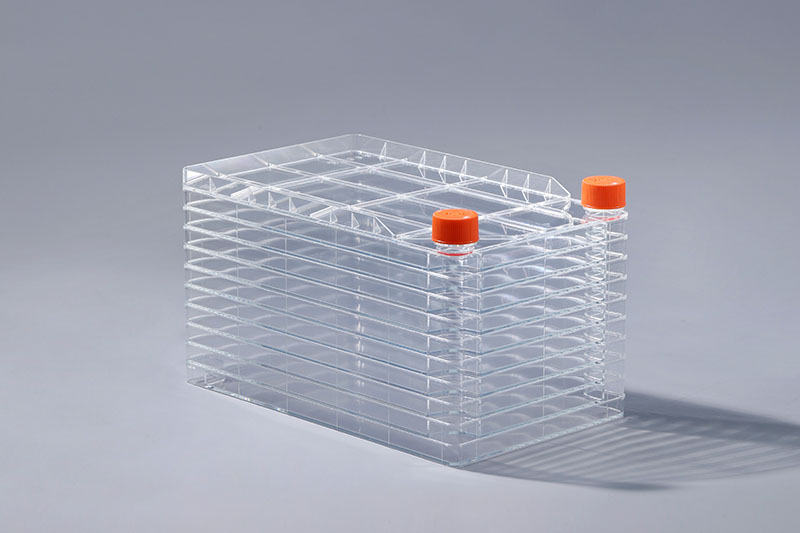साइटोटोक्सिसिटी कोशिकाओं या रसायनों के कारण होने वाली एक विशुद्ध रूप से कोशिका-हत्या की घटना है जो कोशिका मृत्यु तंत्र के रूप में एपोप्टोसिस या नेक्रोसिस पर निर्भर नहीं करती है। इस परीक्षण के माध्यम से यह पता लगाया जा सकता है कि क्या 1. एमटीटी और एक्सटीटी विधियां: माइटोकॉन्ड्रिया के अंदर एंजाइम की गतिविधि का उपयोग करके, विशिष्ट टेट्राजोलियम लवण को परिवर्तित किया जा सकता है, और फिर एक माइक्रोप्लेट रीडर द्वारा पता लगाया जा सकता है; के कच्चे माल में ऐसे पदार्थ हैं जो कोशिका वृद्धि के लिए अनुकूल नहीं हैं। / या कोशिकाओं की शारीरिक प्रक्रिया, जैसे कोशिका झिल्ली या साइटोस्केलेटन संरचना, कोशिका चयापचय प्रक्रिया, संश्लेषण, कोशिका घटकों या उत्पादों का क्षरण या विमोचन, आयन विनियमन और कोशिका विभाजन और अन्य प्रक्रियाएं, जिससे कोशिका अस्तित्व, प्रसार और / या के विकार होते हैं। समारोह, जिसके परिणामस्वरूप प्रतिकूल प्रतिक्रिया होती है। आम तौर पर, सेल फैक्ट्री साइटोटोक्सिक है या नहीं, इसका परीक्षण निम्नलिखित तरीकों से किया जा सकता है:
2। एलडीएच विधि: कोशिका संवर्धन सतह पर तैरनेवाला में एलडीएच की एंजाइम गतिविधि का पता लगाकर साइटोटोक्सिसिटी का पता लगाया जाता है;
3. अन्य एंजाइमेटिक तरीके: जैसे कि सतह पर तैरनेवाला में क्षारीय फॉस्फेट और एसिड फॉस्फेट की गतिविधियों का पता लगाना;
4. सेल प्रसार विश्लेषण किट: सामान्य कोशिकाओं में जोरदार चयापचय होता है, और उनके माइटोकॉन्ड्रिया में सक्सेनेट डिहाइड्रोजनेज टेट्राजोलियम लवण (जैसे MTT, XTT, WST-1, आदि) को बैंगनी क्रिस्टलीय पदार्थों में कम कर सकते हैं, जो कोशिकाओं के आसपास जमा होते हैं, और फिर OD पढ़ सकते हैं। सेल प्रसार स्थिति का पता लगाने के लिए एक माइक्रोप्लेट रीडर द्वारा मूल्य।
5। फ्लोरेसिन ल्यूमिनेसेंस विधि द्वारा सेल व्यवहार्यता का पता लगाना: एडिनाइलेट किनेज (एके) सभी यूकेरियोटिक और प्रोकैरियोटिक कोशिकाओं के कोशिका द्रव्य में मौजूद है, और एके एटीपी उत्पन्न करने के लिए एडीपी को सक्रिय कर सकता है। जब कोशिकाएं क्षतिग्रस्त हो जाती हैं, तो कोशिका झिल्ली क्षतिग्रस्त हो जाती है और AK को संस्कृति सतह पर तैरनेवाला में छोड़ दिया जाता है। किट एटीपी की क्रिया के तहत प्रकाश का उत्सर्जन करने के लिए लूसिफ़ेरेज़ और ल्यूसिफ़ेरिन का उपयोग करती है, और एक रसायनयुक्त उपकरण द्वारा मात्रात्मक रूप से पता लगाया जा सकता है। सेल संस्कृति उपभोग्य सामग्रियों की गुणवत्ता सुनिश्चित करने के लिए नियमित परीक्षण आइटम।
4. Cell Proliferation Analysis Kit: Normal cells have vigorous metabolism, and succinate dehydrogenase in their mitochondria can reduce tetrazolium salts (such as MTT, XTT, WST-1, etc.) to purple crystalline substances , deposited around the cells, and then read the OD value by a microplate reader to detect the cell proliferation state.
5. Detection of cell viability by fluorescein luminescence method: Adenylate kinase (AK) exists in the cytoplasm of all eukaryotic and prokaryotic cells, and AK can activate ADP to generate ATP. When cells are damaged, the cell membrane is damaged and AK is released into the culture supernatant. The kit uses luciferase and luciferin to emit light under the action of ATP, and can be quantitatively detected by a chemiluminescence instrument.
Testing whether a cell factory has cytotoxicity can be carried out in several ways, and this test is also one of the routine testing items to ensure the quality of cell culture consumables.
The FAI climbed 5.9 percent year-on-year in the first 11 months of 2018, quickening from the 5.7-percent growth in Jan-Oct, the National Bureau of Statistics (NBS) said Friday in an online statement.
The key indicator of investment, dubbed a major growth driver, hit the bottom in August and has since started to rebound steadily.
In the face of emerging economic challenges home and abroad, China has stepped up efforts to stabilize investment, in particular rolling out measures to motivate private investors and channel funds into infrastructure.
Friday's data showed private investment, accounting for more than 60 percent of the total FAI, expanded by a brisk 8.7 percent.
NBS spokesperson Mao Shengyong said funds into weak economic links registered rapid increases as investment in environmental protection and agriculture jumped 42 percent and 12.5 percent respectively, much faster than the average.
In breakdown, investment in high-tech and equipment manufacturing remained vigorous with 16.1-percent and 11.6-percent increases respectively in the first 11 months. Infrastructure investment gained 3.7 percent, staying flat. Investment in property development rose 9.7 percent, also unchanged.
 English
English



















































